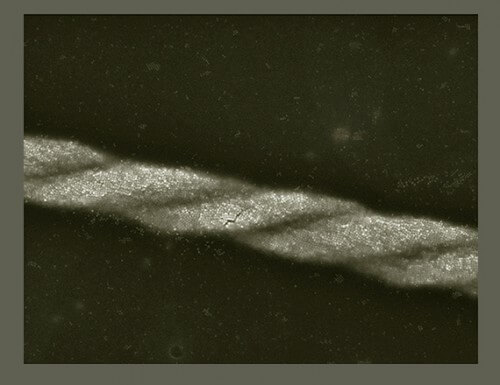Magnetic nanoparticles self-organize into helical structures

Nanocubes are not child's play. Weizmann Institute of Science scientists used these cubes to create thread-like structures: they showed that given the right conditions, cube-shaped nanoparticles are able to self-organize and thus form helical structures. These findings, which reveal how nanomaterial is able to organize and create surprisingly complex and beautiful structures, were recently published in the scientific journal Science.
Dr. Raphael Klein and post-doctoral research student Dr. Gurvinder Singh, from the Department of Organic Chemistry at the Weizmann Institute of Science, tested the phenomenon using nanocubes based on an iron oxide mineral called "magnetite". As its name suggests, it is a mineral with natural magnetic properties, which is found in various places - including in bacteria, which use it to sense the Earth's magnetic field.
Magnetism is only one of the forces acting on those nanoparticles. In collaboration with Prof. Peter Krall's research group (King) from the University of Illinois, Chicago, Dr. Klein and Dr. Singh developed a theoretical model to understand how different forces are able to rearrange the magnetite particles. "Different types of forces cause nanoparticles to organize in different ways," says Dr. Klein. "These forces can oppose each other, so the idea is to find the right balance between them, which can cause the particles to self-assemble into structures of new materials." According to the models they developed, the shape of the nanoparticles is important. It turns out that only cubes provide the necessary balance for the opposing forces to create helical structures.
The researchers found that the two main opposing forces acting on the particles are the magnetic force and the van der Waals force. The magnetic force causes the magnetic particles to attract and repel each other, thereby pushing the cube-like particles to arrange themselves corner-to-corner. On the other hand, van der Waals forces bring the faces of the cubes closer together, and "persuade" them to arrange themselves in a row. When these forces act together on the same small cubes, the result is their independent arrangement as spiral-shaped structures.
In their experiments, the scientists were exposed to a magnetic field at a relatively high concentration of magnetite-based nanocubes in solution. The long helical chains that remained after the solution evaporated were surprisingly solid. They repeated the experiment with nanoparticles of different shapes, but as they expected, they found that only cubes were characterized by the correct structure, which allows them to organize into a coil. In addition, Dr. Klein and Dr. Singh found that when there is a particularly high concentration of particles, they get chiral strands, which are all bent in the same direction. Apparently, opposing forces are able to "take into account" the most efficient way to compress the strands in a given space.
Despite the impressive appearance of the nanocube strands, Dr. Klein says it is too early to think about commercial applications. The immediate value of his work, according to him, is the basic demonstration of self-construction at the nano level. "Although magnetite has been studied in depth - even in its nanoparticle form - for many decades, no one has seen these structures before," says Dr. Klein. "Only when we understand how those forces affect the nanoparticles, we can begin to apply the findings, and perhaps produce new materials capable of organizing and building themselves."
More information can be obtained from the Weizmann Institute of Science spokesperson's office: 08-934-3856

One response
Maybe it could be used to build a cable for a space elevator.